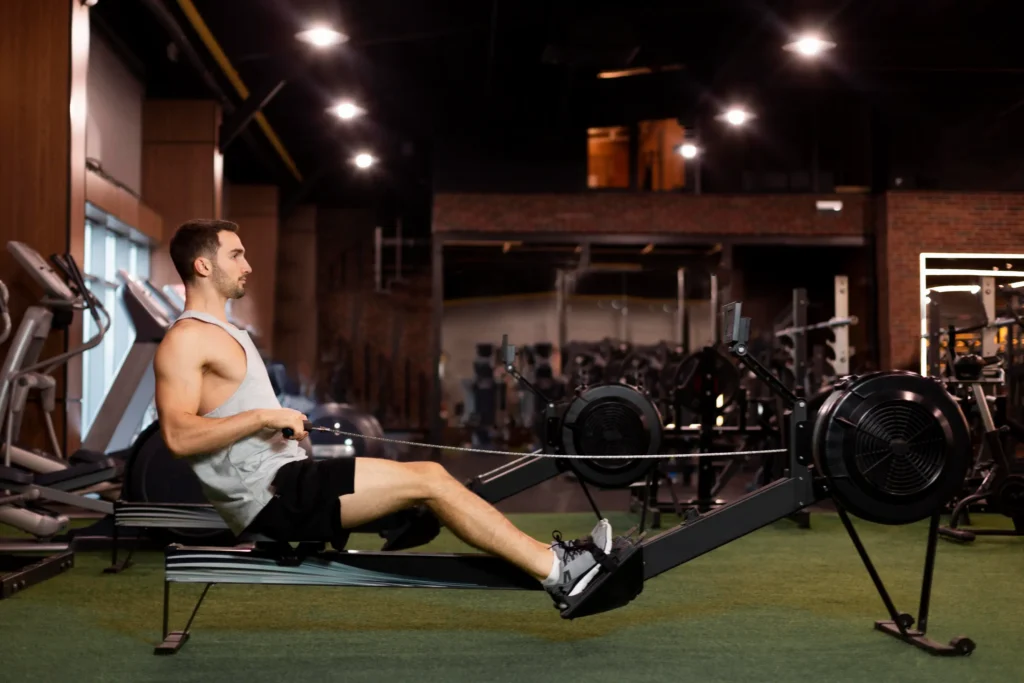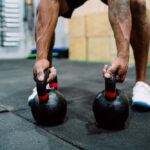Both machines promise excellent workouts, but they each bring unique strengths to the table. Whether you’re looking for a heart-pounding cardio session, an effective weight-loss tool, or a muscle-toning workout, choosing the right equipment can be a game-changer. Rowing and biking may both provide killer cardio, but they do it in different ways. So, which one deserves a spot in your workout routine? Let’s break down the pros and cons of each machine in this fitness face-off to help you decide which one will get you closer to your fitness goals.
The basics of each machine
The rowing machine mimics the movements of rowing on water. It involves a sequence where you push with your legs, engage your core, and pull with your arms, giving you a full-body workout. Each stroke engages multiple muscle groups, including the legs, core, back, and arms, making it highly effective for overall conditioning. Rowers are popular for their low-impact nature, offering a workout that’s easy on the joints but still intense. They’re also known for burning a high number of calories in a relatively short amount of time, making them a go-to for those looking to burn fat and build strength simultaneously.
The stationary bike is a simpler, often more familiar piece of equipment that focuses on the lower body. With a seated position and pedals to push, it’s essentially a road bike without the road. Stationary bikes come in various forms, from upright and recumbent to spin bikes, each offering unique angles and features for different preferences. They primarily target the lower body, providing a solid leg workout while also boosting cardiovascular endurance. Bikes are also incredibly accessible and versatile, with easily adjustable resistance to suit everything from a light warm-up to a high-intensity interval session.
Workout benefits: Rowing machine vs. stationary bike
Let’s look at benefits side by side:
Rowing machine benefits
- Full-body engagement: One of the rowing machine’s biggest selling points is its full-body workout. Each stroke engages around 85% of your muscles, from your legs and glutes to your core and arms, providing a balanced workout that builds strength and endurance.
- Core strengthening: Rowing requires stability and control through your core, making it excellent for strengthening the abdominal and back muscles. This is ideal for people looking to improve their posture or reduce the risk of back injuries.
- Low impact, high return: Rowing is low-impact, meaning it doesn’t put a lot of strain on your joints, making it great for people recovering from injuries or those with joint concerns. Despite the low impact, rowing still delivers a high-calorie burn, making it efficient for fat loss and strength.
Stationary bike benefits
- Lower body focus: If you’re looking to build and tone your legs, stationary bikes are hard to beat. They target the quads, hamstrings, calves, and glutes, especially when the resistance is increased. Cycling is excellent for anyone aiming for strong, toned legs.
- Joint-friendly cardio: Biking is another low-impact exercise, making it a safe option for those with knee or hip issues. It provides all the cardiovascular benefits without the pounding that comes with some other cardio exercises.
- Adjustable intensity: With a quick turn of the resistance knob, you can shift from a gentle ride to a grueling climb. This flexibility makes bikes perfect for different types of workouts, whether you’re up for a steady-state cardio session or a high-intensity interval workout.
Calorie burn and weight loss potential
When it comes to calorie burning, both machines deliver, but the rowing machine generally has a slight edge. Rowing uses multiple muscle groups, which leads to a higher overall calorie burn compared to stationary cycling, which primarily targets the lower body.
For those aiming to lose weight, the rowing machine might be the better choice, as it involves more muscles, which translates to a higher energy expenditure over time. However, if you’re more comfortable with cycling, the stationary bike can still be an effective calorie burner when used consistently with challenging resistance or interval training.
Muscle engagement and strength-building potential
The rowing machine is a clear winner when it comes to total muscle engagement. Because rowing incorporates both the upper and lower body, it activates more muscle groups and helps develop balanced strength. With each stroke, the legs, back, shoulders, arms, and core are all working in sync, making rowing an excellent choice for total-body toning and muscle endurance.
The stationary bike, on the other hand, zeroes in on the lower body, primarily targeting the quads, hamstrings, calves, and glutes. This makes it ideal for those specifically interested in building leg strength or looking for a targeted lower-body workout.
Which machine fits your fitness goals?
- For overall conditioning: If your goal is full-body conditioning, the rowing machine is a clear winner. With each stroke, you’re working the upper body, lower body, and core, making it an effective choice for total-body fitness.
- For focused leg workouts: For those who want to build lower-body strength or specifically target the legs, the stationary bike offers a more intense focus on the quads, hamstrings, and calves, particularly at higher resistance levels.
- For endurance training: Both machines work well for endurance training, but the choice depends on personal preference. Rowing provides a total-body endurance boost, while the stationary bike is perfect for those who prefer endurance work that’s centered on the legs. If you’re into marathon or triathlon training, stationary bikes can better simulate cycling portions of these events.
- If you’re leaning toward the rowing machine but aren’t sure how to get started, beginner HIIT rowing routines can help you maximize the calorie-burning and muscle-building benefits we’ve discussed
- For weight loss: For calorie burn and weight loss, either machine can be effective, but rowing has a slight edge due to its full-body activation. That said, both machines will contribute to weight loss when paired with a balanced diet and consistent workouts. Choose the one that keeps you motivated to stay consistent!
Final thoughts
In the end, the best machine is the one that suits your fitness goals, physical needs, and, just as importantly, the one you’ll actually enjoy using. Both the rowing machine and stationary bike have unique benefits, and each one can deliver a great workout when used consistently.





